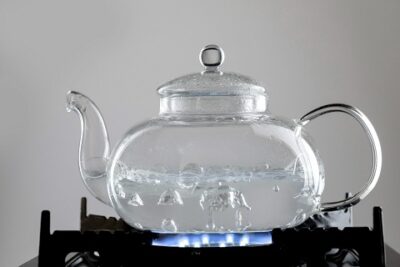An ultraviolet absorber is a specialized material that has utility for dissipating or transforming ultraviolet light energy into a lower energy state. Thus, they provide protection to polymers by preventing the harmful ultraviolet light from degrading them. There exists a variety of UV absorbers for protecting plastics, adhesives, special coatings, as well as elastomers from the damaging effects of outdoor weathering occurring due to exposure to ultraviolet light. The UV absorbers are advantageous because of low-cost benefits whereas it has a short time usage and thus limited exposure (Lapidot et al., 2003).
Thus, these are special additives that function by competitive absorption of damaging UV light. Also, UV absorbers can be combined with different types of light stabilizers such as hindered amine light stabilizers which provide the greatest level of resistance to weathering due to harmful UV rays.
DIFFERENT TYPES OF UV ABSORBERS:
There are different types of Ultraviolet absorbers due to differential compositions such as:
- Benzophenone is the most commonly used ultraviolet absorber which is used for providing protection to various forms of plastics.
- Also, Benzotriazole is another common absorber for absorbing ultraviolet rays and protecting polyvinyl chloride (PVC).
- In addition to this, Cyanoacrylate is a UV absorber for adhesives.
- Carbon black is used commonly as UV radiation absorbers and is most effective.
- Rutile titanium oxide has effectiveness for the UV ray in the range of 300-400 nm whereas it is not useful for the very short wavelength such as 315nm UV rays range (Kiguchi et al., 2001).
- Also, Hydroxybenzophenone is another UV absorber. Hydroxyphenylbenzotriazole is popular UV stabilizers that provide additional advantage due to suitability for transparent as well as neutral applications.
- Also, another category is Enzotriazoles as well as hydroxyphenyl triazines which are effective for polycarbonate.
- The Oxanilides have high utility for polyamides (Sahar et al., 2018).
HOW ULTRAVIOLET ABSORBERS WORK?
Majorly the UV absorbers work by absorbing the invisible range of ultraviolet light followed by releasing the heat energy. These target the incident radiation and then prevent any initial degradation (Mahltig et al., 2005). The highly energetic Ultra Violet light energy is re-emitted in form of energy that is at a significantly lower energy level and then the energy is dissipated in a very less dangerous form as compared to its initial form. Thus, UV absorber absorbs light via a chromophore which is present in the polymer. It filters out the UV light which is harmful to the polymer before the formation of a chromophore free radical. The range of operating of a UV absorber is within the 290nm -350 nm. These are applied between 30-40g/l as per the type of polymeric fibre as well as its construction. The highest efficiency is of the organically based UV absorbers. The UV absorbers can provide surface protection from Ultraviolet rays by 2 methods via applying a surface coating and another by mixing the absorber directly into the material before its formation.
There is a substantial difference in surface treatments as well as that penetrate into the fibre interior reflects two possible mechanisms for UV absorbers: screening (surface) and in situ free-radical scavenging (interior).
LIMITATIONS:
- They work for a short period of time only.
- Also, they require a substantial thickness of a product for efficient working and thus are not suitable for very thin plastic products, films and textiles.
- Their effectiveness is limited due to the physical limitations of the absorption process as their ability to absorb depends on the need for high concentrations of additive and thickness of polymer before sufficient absorption will occur to retard the photodegradation effectively.
- These UV absorbers cannot be applied in a single batch along with other finishing agents. But excess of the product will have a detrimental effect on the polymer (Santos et al., 2018).
- Also, mechanical damage like scratches majorly affects the performance of the UV absorber, increasing the vulnerability of such uncovered base surfaces to discolouration as well as wear.
- UV absorbers have no provision of adequate UV protection until it is paired with hindered amine light stabilizers
APPLICATIONS:
· It is used in coating the surfaceonly with a stabilizing agent mixed with lacquer offers ease of application.
· The UV absorbers are widely used in coatings as well as additives in films and fabrics for controlling UV absorption (Becheri et al., 2008).
· The benzotriazole type UV-absorbers are used in the dyeing of polyester fibers.
· It is useful for the prevention of photo-oxidative degradation throughout the fiber cross-section.
· The UV absorbers such as 2-hydroxy-benzophenone as well as 2-hydroxy-benzotriazole derivatives along with Hydroxyphenyltriazine derivatives are effectively used for producing engineering thermoplastics.
· Also, a nano-structured light stabilizer can be produced via a combination of the ultra-violet absorber as well as graphene oxide (GO) nano-sheets.
· It is also used in skin products as it absorbs the UV rays and does not allow to penetrate the skin.
· The UV absorber is used for improving the light fastness of the organic pigments by quenching of their excited states.
FAQS:
Q1: What is a UV absorber?
Ans: These are materials that absorb harmful incident UV rays and protect the material from the ill effects of radiation. Also, the UltraViolet absorbers do not undergo degradation themselves rapidly whereas they convert the UV energy into another level of heat energy, which can be dissipated via the polymer matrix.
Q2: What is the use of UV absorbers?
Ans: They are used as polyolefins) which are applied in very thin sections for protecting films as well as fabric and fiber. Also, Benzophenones are brilliant general-purpose UV absorbers that are used for clear polyolefin systems. Another use of Benzophenones is in pigmented compounds. They can be used in polystyrene and polyesters such as Benzotriazoles absorbers.
Q3: How are UV absorbers used?
Ans: They are applied in a concentration of about 0.25-1.0% and these have a proclivity for drawing in UV rays and they protect the surface before the UV rays harm the core of the material.
Q4: What are advantages of using UV absorbers?
Ans: The Ultra Violet absorbers are the stable dispersions that provide low migration as well as UV protection even for a clear film as well as bottle packaging applications. Thus, it protects the contents of human consumption from getting degraded by UV rays. As the surface is protected then it also provides the consumer products with longer shelf life and looks appealing. Also, they can protect delicate colors as well as flavors along with vitamins s well as nutrients in custom packaging applications for foods.









